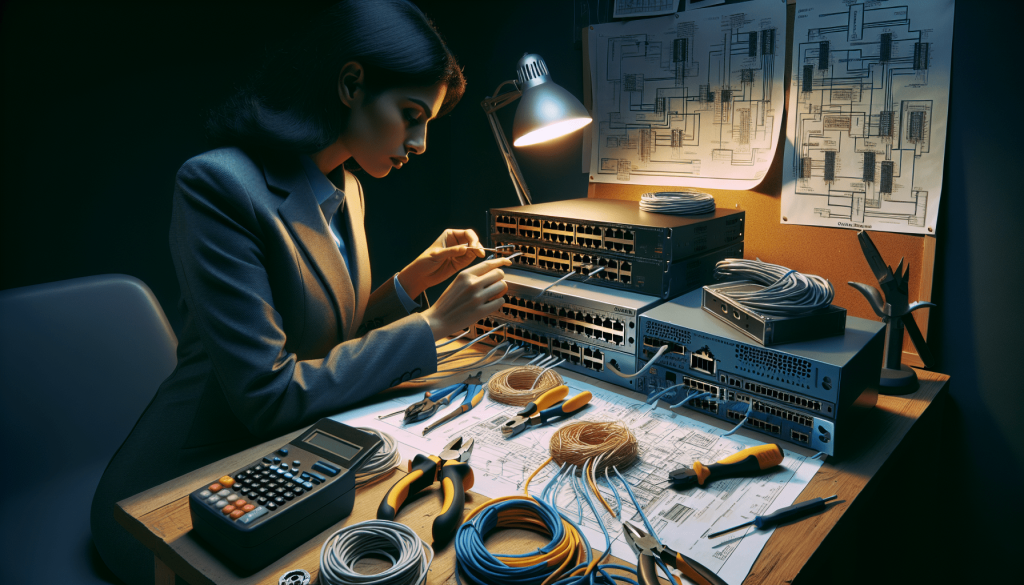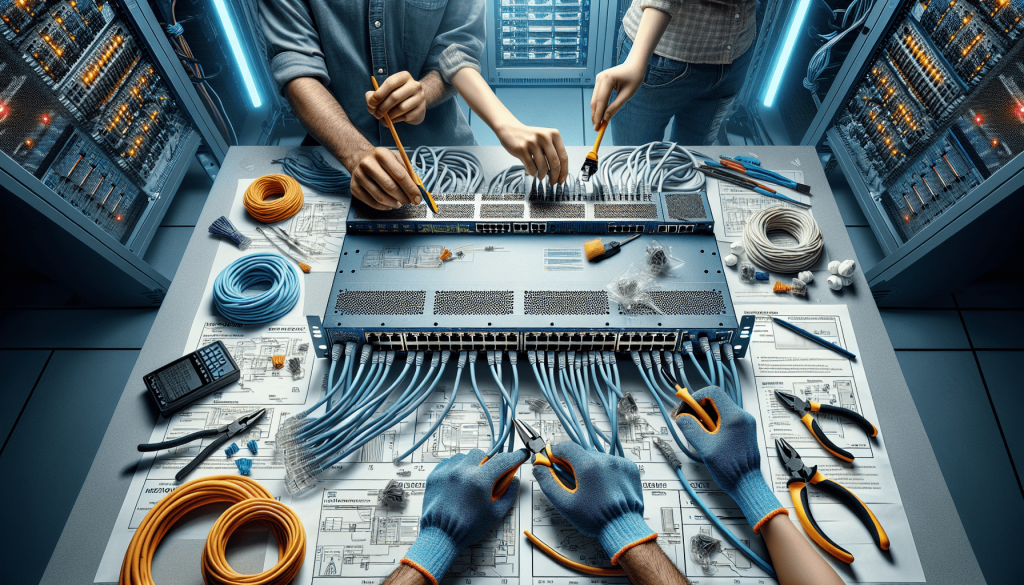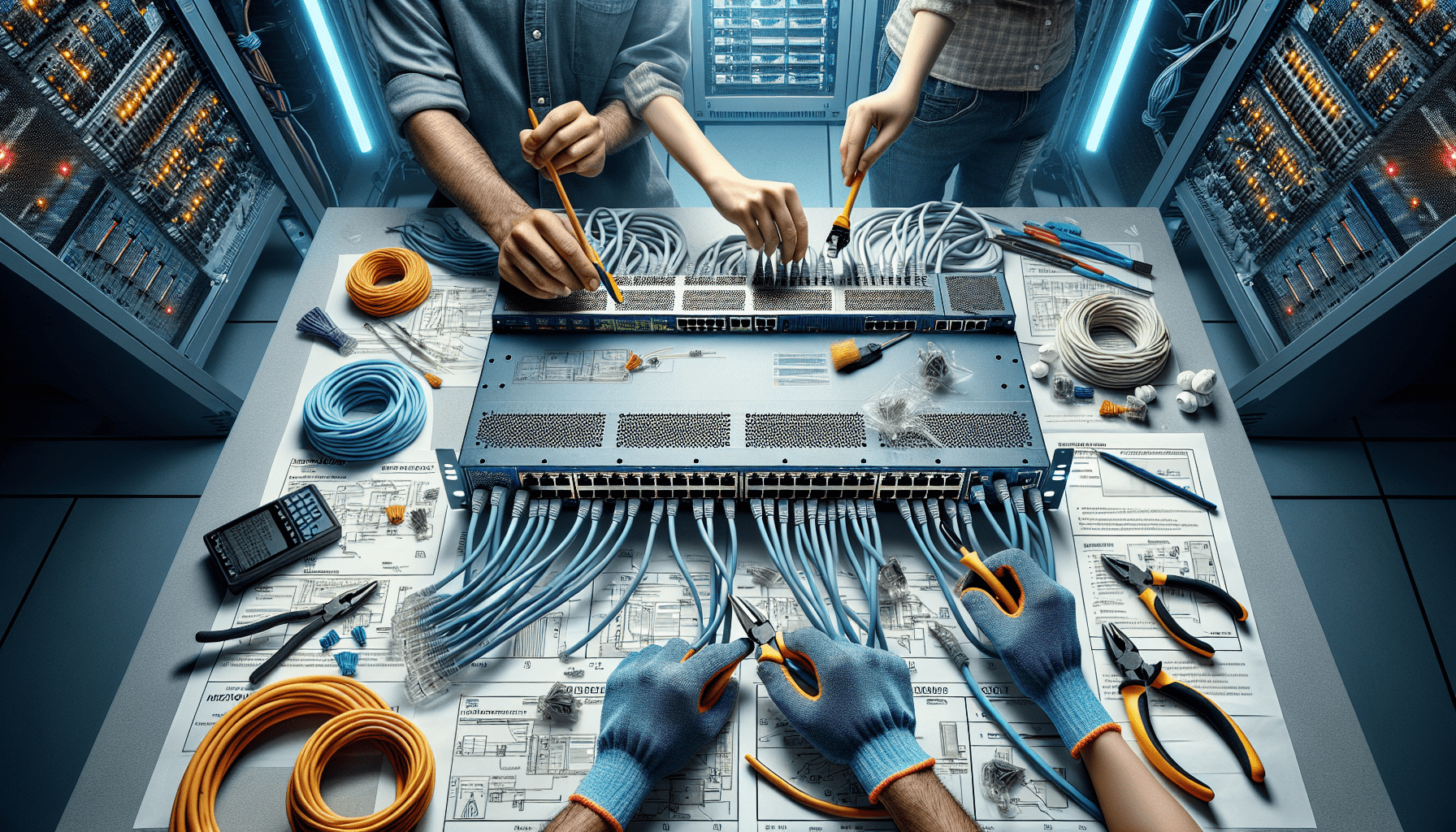Are you planning on installing a network switch but not sure where to start? Look no further! The Ultimate Guide to Network Switch Installation Do’s and Don’ts is here to provide you with all the essential information you need. Whether you’re a novice or an experienced IT professional, this comprehensive guide will help you avoid common pitfalls and ensure a successful installation. From understanding the do’s and don’ts to learning about best practices, this guide will give you the confidence to set up and maintain your network switch effectively. Get ready to enhance your networking skills and create a reliable and efficient network infrastructure.

Choosing the Right Network Switch
When it comes to choosing the right network switch, there are a few factors you should consider. First, think about the required ports and speed. How many devices will be connected to the switch? Will you need fast Ethernet ports or Gigabit ports for faster data transfer? Understanding your network’s requirements will help you select a switch that can handle your needs.
Another important consideration is Power over Ethernet (PoE) compatibility. If you have devices, such as IP cameras or wireless access points, that require power and data over a single Ethernet cable, make sure the switch you choose supports PoE. This will simplify your installation process and eliminate the need for additional power outlets.
Lastly, evaluate the switch’s Quality of Service (QoS) features. QoS allows you to prioritize certain types of network traffic, ensuring that critical applications like voice or video conferencing receive the necessary bandwidth. Look for switches that offer QoS capabilities to optimize your network performance.
Planning the Installation
Before diving into the installation process, it’s crucial to plan it properly. Start by identifying the ideal location for the switch. Consider factors such as accessibility and proximity to devices that will be connected. You should also ensure that the location is well-ventilated and has sufficient cooling to prevent overheating.
Next, determine the cable runs and lengths. Measure the distances between devices and the switch, accounting for any obstacles or potential cable congestion areas. Proper planning will help you minimize cable lengths and avoid unnecessary clutter, leading to a more organized and efficient installation.
Preparing for Installation
Safety should always be a top priority when installing a network switch. Follow appropriate safety measures, such as turning off power sources and wearing necessary protective gear. Taking these precautions will help prevent accidents and ensure a smooth installation process.
Before starting the installation, gather all the necessary tools and equipment. You’ll likely need tools like screwdrivers, cable cutters, and cable testers. Having everything on hand will save you time and frustration during the installation process.
To maintain organization throughout the installation, label and organize your cables. Use appropriate cable management techniques, such as color-coded labels or cable ties, to keep everything neat and easily identifiable.
Installing the Network Switch
When it’s time to install the network switch, it’s essential to follow the manufacturer’s instructions carefully. Each switch may have specific installation requirements or steps that need to be followed to ensure optimal performance. Pay close attention to any specific guidelines provided.
Before connecting the cables, power off all network devices. This precautionary step prevents any potential electrical surges or issues during the installation process. Once the power is off, you can securely connect the cables from the devices to the appropriate ports on the switch.
After connecting the cables, it’s crucial to test them for proper connectivity. Use a cable tester to verify that each connection is functioning as expected. This step will help you identify and address any potential issues before completing the installation.

Network Switch Configuration
Once the physical installation is complete, you’ll need to configure the network switch. Access the switch’s web interface using the provided IP address or through a management tool. From there, you can assign IP addresses to each device connected to the switch, allowing them to communicate effectively.
Additionally, consider configuring VLANs (Virtual Local Area Networks). VLANs can help segment your network, improving security and overall network performance. This step may involve assigning specific ports to specific VLANs to keep traffic separate and controlled.
Testing and Troubleshooting
After the network switch is installed and configured, it’s crucial to test for connectivity. Ensure that all devices connected to the switch can communicate with each other and access the necessary network resources. Monitor network performance to identify any potential bottlenecks or issues that may impact the overall network speed.
If any issues arise, troubleshooting is necessary. Begin by checking cable connections and verifying that they are secure and properly seated. Review the switch configuration settings to ensure that everything is set up correctly. Use any available network diagnostic tools to identify and resolve any issues.
Securing the Network Switch
To protect your network against unauthorized access or potential security breaches, it’s essential to secure your network switch. Start by changing the default passwords for both the switch’s web interface and any administrative accounts. Use strong, unique passwords to prevent unauthorized access.
Disable any unused ports on the switch. Unused ports can potentially be exploited by unauthorized devices attempting to gain access to your network. By disabling these ports, you reduce the risk of unauthorized access.
Enable port security features provided by the switch. This can include features like MAC address filtering, which allows you to specify which devices can connect to the switch. By enabling these security features, you can further enhance your network’s security.
Maintenance and Upgrades
Maintenance and regular updates are vital for keeping your network switch running smoothly. Regularly check for firmware updates provided by the manufacturer and apply them when necessary. Firmware updates often include bug fixes and security patches that help ensure the switch’s optimal performance and protect against vulnerabilities.
Keep your switches clean to prevent dust buildup that can impact their performance. Regular dusting and cleaning of the switch will help maintain proper ventilation and cooling, reducing the risk of overheating.
Consider future network expansion when planning your installation. Leave room for additional switches or devices that may be added in the future. This foresight will save you the hassle of reconfiguring your network down the line and allow for seamless expansion as your network grows.
Best Practices for Cable Management
Proper cable management is crucial for maintaining an organized and efficient network installation. Use appropriate cable management techniques to ensure that cables are neatly organized and easily identifiable. This can include using cable trays, racks, or zip ties to keep cables organized and prevent tangling.
Avoid cable clutter by carefully routing cables to minimize their lengths and optimize airflow. Too many overlapping or unnecessary cables can reduce cooling efficiency and impede network performance. Take the time to plan and arrange cables in a way that promotes proper airflow and avoids clutter.
Label and document all cable connections to help with future troubleshooting or maintenance. Accurately labeling each cable and documenting its purpose or destination will make it easier to identify and address any issues that may arise in the future.
Common Mistakes to Avoid
When it comes to network switch installation, certain mistakes can lead to avoidable issues or complications. Avoid these common pitfalls to ensure a successful installation:
One common mistake is ignoring network switch compatibility. Ensure that the switch you choose is compatible with your network devices and infrastructure. Mismatched hardware can lead to compatibility issues and limit the switch’s effectiveness.
Neglecting proper grounding is another mistake to avoid. Proper grounding helps protect against electrical surges and ensures the safety and stability of your network. Follow grounding guidelines provided by the manufacturer to prevent potential electrical hazards.
Failing to backup switch configuration is a critical mistake to avoid. Regularly back up your switch configuration to protect against data loss or configuration errors. Having a backup will make it easier to restore your switch to a functional state if any issues arise.
By following these do’s and don’ts of network switch installation, you can ensure a smooth and successful installation process. Taking the time to plan, prepare, and configure your switches correctly will result in a reliable and efficient network that meets your needs.
